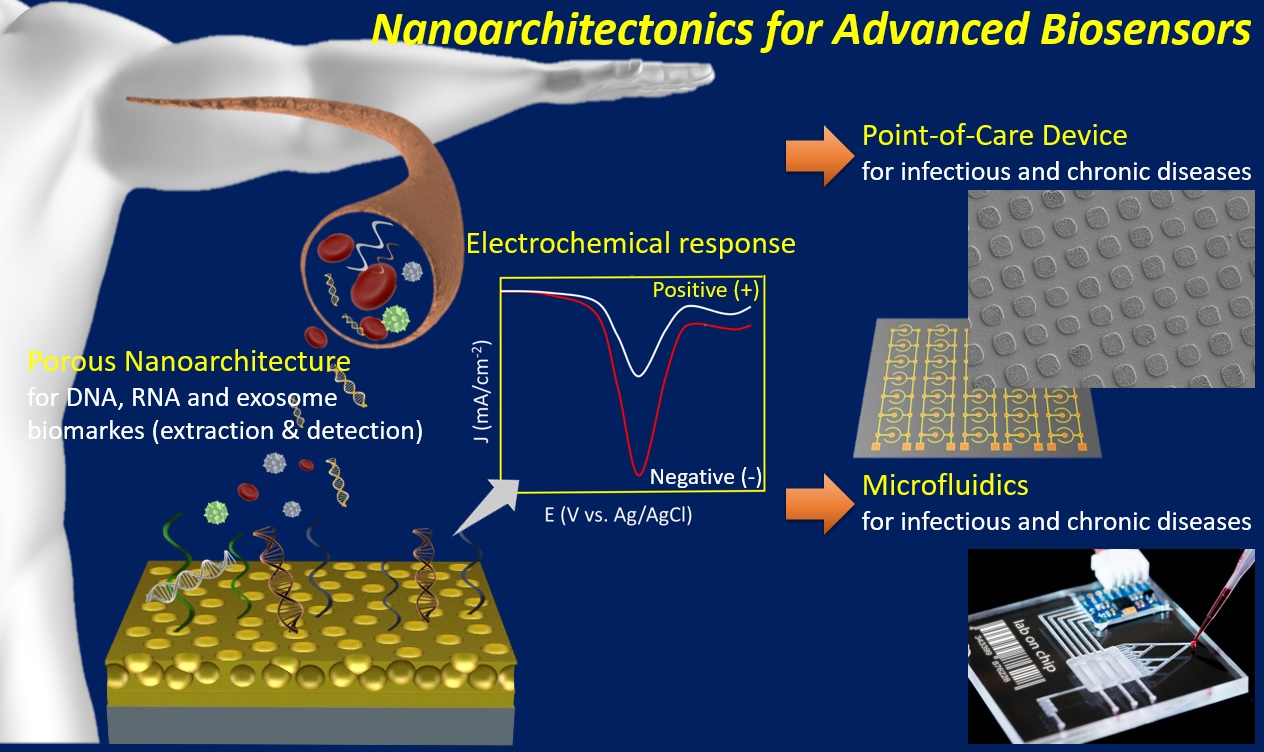Development of molecular sensors based on nanoarchitectured porous materials for detecting cancer and infectious diseases
Project Summary
Early diagnosis is important to prevent the spread of the disease and to develop successful treatment. Due to this, the current clinical studies have centered on developing novel diagnostic devices for detecting cancer cells, viruses, etc. Molecular biology-base! d approaches which require sophisticated laboratory, expensive kit, highly trained clinician, long assay duration with the possibility of biases from amplification make them highly expensive and inaccessible to low-resource settings.Therefore, easy-to-use and portable diagnostic tools which can provide rapid and sensitive detection of infectious diseases are highly desirable. This is particular important during the recent COVID-19 pandemic, in which the diagnosis is mostly based on RT-PCR and many less developed countries cannot access adequate testing. Therefore, it is a priority to develop a nucleic acid and protein at the point-of-care and integrate the assay into a multiplex panels. Point-of-care diagnostic device, which is cost-effective, portable and can be used diagnose patients in non-clinical settings, where the multiplexing increases the amount of information gained from a single test and improves clinical sensitivity and specificity. Thus, a portable ! multiplexed diagnostic tool can be highly beneficial for rapid! diagno is of COVID-19 and can be operated outside of sophisticated lab especially for regional areas and local community centres to reduce the burden on hospitals and clinics. Mesoporous metals with electro-conductive frameworks can generate superior signal transduction by providing pore-induced high surface area for uptaking of biological molecules and redox species, hybridisation moiety for the efficient and faster analyte (probe or target) binding, and electrocatalytic cascade signal amplification. Introducing pores into the NPs offers a high surface area to volume ratio and enhances the catalytic activity (and detection process) as such pore introduction maximises the surface-dependent mass transport as compared to those of bulk materials. This in turn leads to better stabilization of particles from sintering, expedition of cascade reaction by placing catalytic functionality in sequential compartments, and enhancement of the selectivity by means molecular sieving. Besides, meso! porous structure (as electrode materials and magnetic isolating agents) offers several advantages for improving the performance of biosensors; i) it has increased amount of electrochemically active surfaces, ii) it reduces the amplitude of the noise and achieved the high signal-to-noise ratio by lowering the impedance of the electrode, and iii) it can reduce the electrode size, which enables placing of multiple electrodes in a high density array for advanced spatial resolution.
We have also recently developed several assays for detecting microRNA, exosome and autoantibody with high efficiencies. Our aim is to generate novel diagnostic tools for detecting cancer and infectious diseases. In collaboration with Centre for Clinical Research (CCR), University of Queensland, International Center for Materials Nanoarchitectonics (WPI-MANA), National Institute for Materials Science, Queensland Micro Nanotechnology Centre (QMNC), Griffith University! , and T anslational Research Institute, this project concentrates on fabricating novel diagnostic tools for detecting cancers and infectious diseases based on mesoporous materials and validating the developed diagnostic devices with clinical samples.


